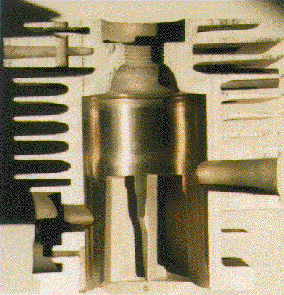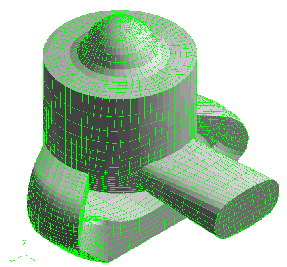
© Aleksandra Egelja
The project "Numerical Optimisation of the Scavenging Process of a Port-Controlled Engine" (Rechnerische Spülungsoptimierung eines 2-Takt Motors mit schlitzgesteuerten Überström- und Auslasskanälen und bewegtem Kolben)) is carried out at the University of Freiburg in collaboration with an industrial partner. It is directed by Prof. Dr. D. Kröner and Dr. A. Klimmek. The work is supported by the BMBF. The implementation of the new clean air act regulates the usage of two-stroke engines, taking into consideration the air pollution, and also specifies a significant reductionof the unburnt hydrocarbons. These emission are mostly caused by scavenging process losses (by mixing of the fresh and burnt gas). The goal of this project conducted by our group and the industrial partner is the improvement of engine geometry that will lead to the stabilisation of the scavenging flow and the minimisation of the deficit in process. (Team: P. Bachmann, A. Egelja, B. Schupp, D. Trescher)

|

|

|

|